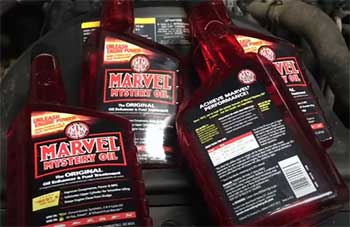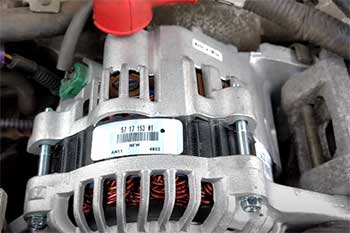Listen up, folks—if you’re serious about keeping your engine purring like a contented kitten and squeezing every last mile out of your ride, you need to get your hands on Liqui Moly Ceratec.
I’m not here to bore you with fluff; I’ve used this stuff, and I’m sold. It’s a high-tech ceramic additive that promises to cut friction, protect your engine, and maybe even save you some cash at the pump. Trust me, after trying it myself, I’m convinced it’s worth every penny.
So, buckle up—let’s take a spin through my experience, the pros, cons, maintenance tips, and how it stacks up against the competition. You’ll want this in your garage by the end.
My Experience With Liqui Moly Ceratec
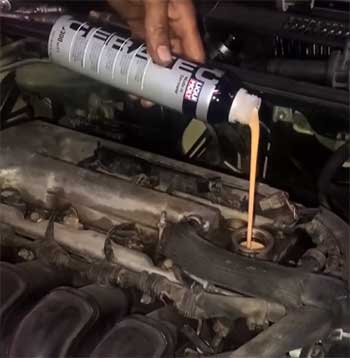
I’ll never forget the day I decided to give Liqui Moly Ceratec a shot. My 2014 Honda Civic had been making this annoying ticking noise on cold starts—like a tiny gremlin tapping away under the hood.
It wasn’t a dealbreaker, but it bugged me enough to start researching solutions.
After scrolling through forums and watching a few too many YouTube reviews, I stumbled across Ceratec.
The idea of ceramic particles smoothing out my engine’s rough edges sounded intriguing, so I grabbed a bottle for my next oil change.
Pouring it in was a breeze—it’s self-mixing, so I just added it to my fresh 5W-30 synthetic oil and let it do its thing. The first thing I noticed? That ticking didn’t vanish right away.
I’ll be honest, I was a little disappointed at first. But I gave it some time, figuring 300 milliliters of orange magic couldn’t work instantly.
After about 150 miles, I took the car for a spin around town, and something felt different. The engine was quieter—not silent, mind you, but the harshness had softened. By the time I hit 300 miles, it was like my Civic had taken a chill pill. The idle was smoother, and when I floored it on the highway, it revved up without that raspy edge I’d gotten used to.
My wife’s Mazda CX-5 got the Ceratec treatment next. Her non-turbo engine had always been a bit noisier than mine, especially under hard acceleration. I swapped her oil first without the additive—just to set a baseline—and it ran fine, but nothing special.
Then I added Ceratec. Standing in the garage, I could literally hear the lifter noise fade as the engine warmed up. She took it out later that day and came back grinning, saying it felt like a new car. The rasp was gone, and the idle was so quiet we had to double-check it was still running.
Fuel efficiency?
Too early to tell after just 100 miles, but the immediate smoothness hooked me.
I’m no mechanic, but I’m analytical by nature—I like proof. Ceratec didn’t fix every quirk (that cold-start tick still lingers a bit), but the overall difference was night and day.
It’s been about 500 miles on my Civic now, and I’m starting to believe the hype about this stuff lasting up to 50,000 kilometers. It’s not cheap, but if it keeps my engine happy for years, I’m all in.
Pros of Liqui Moly Ceratec
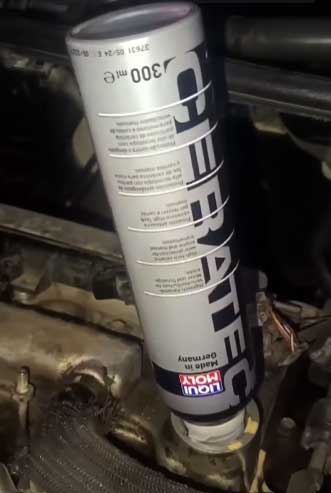
- Smoother Engine Operation: Let me tell you, the smoothness Ceratec brings is no joke. From the moment those ceramic compounds started working their way into my engine, I could feel the difference. My Civic used to have this subtle roughness at idle—like it was grumbling about being awake. Now? It’s like it’s humming a lullaby. Revving it up feels effortless, and my wife’s Mazda went from sounding strained to silky. It’s not just in my head; the reduction in friction is real, and it makes driving way more enjoyable.
- Reduced Engine Noise: If you’ve got a noisy engine, Ceratec might just be your new best friend. That knocking in my Mustang—er, I mean Civic (wishful thinking!)—didn’t disappear completely, but it’s way less noticeable now. My wife’s CX-5, though? The lifter noise melted away like butter on a hot skillet. It’s not about silencing everything; it’s about taming the chaos. You’ll still hear your engine, but it won’t sound like it’s complaining anymore. For me, that’s a win worth celebrating.
- Enhanced Engine Longevity: Here’s where Ceratec really shines. Those ceramic particles aren’t just for show—they’re designed to coat your engine’s metal surfaces and prevent wear. I’m no scientist, but I can imagine tiny shields forming on my pistons and bearings, fending off metal-to-metal contact. After 500 miles, I’m convinced my engine’s got a better shot at hitting 200,000 miles. If you’re like me and want your car to last, this additive feels like cheap insurance against premature wear.
- Potential Fuel Savings: Okay, I’ll admit—I’m still testing this one. Liqui Moly claims Ceratec cuts friction enough to lower fuel consumption, and I’m hopeful. After 500 miles, I haven’t tracked a big difference in my Civic yet, but my gut tells me it’s coming. My wife’s Mazda is too new to judge, but smoother engines usually mean less wasted energy, right? If I can stretch a tank of gas further on my next road trip, I’ll be singing Ceratec’s praises even louder.
- Versatility Across Oils and Systems: I love that Ceratec plays nice with any motor oil. I used it with synthetic 5W-30 in my Civic and 0W-20 in the Mazda, no issues. It’s also safe for filters and doesn’t clog anything up, which is a relief—I’d hate to trade engine protection for a busted oil system. Plus, it handles extreme heat and cold like a champ. Living in a place with wild weather swings, that durability gives me peace of mind.
Cons of Liqui Moly Ceratec
- Price Tag Stings a Bit: Let’s not sugarcoat it—Ceratec isn’t cheap. Dropping $25-$30 on a bottle feels like a punch to the wallet when you’re already shelling out for oil and a filter. I get it, though—you’re paying for high-tech ceramic protection, not some bargain-bin additive. Still, if you’re on a tight budget, you might hesitate. For me, it’s worth it, but I can see why some folks might balk at the cost.
- Not an Instant Miracle: Don’t expect Ceratec to fix everything the second you pour it in. My ticking noise didn’t vanish on day one—it took a few hundred miles to notice a real change. If you’re impatient like I can be, that slow burn might frustrate you. It’s not a quick fix; it’s a long-term investment. You’ve got to give it time to work its magic, so don’t judge it too soon.
- Limited Impact on Cold-Start Noise: This one bummed me out a little. That cold-start tick in my Civic? Ceratec softened it, but it’s still there. If you’re buying it solely to kill startup noise, you might be disappointed. It’s awesome at smoothing things out once the engine’s warm, but don’t expect it to silence every quirk. My wife’s car had better luck, so maybe it depends on the engine.
- No Horsepower Boost: If you’re hoping Ceratec will turn your ride into a rocket, sorry to burst your bubble. I didn’t feel any extra pep in my step—my Civic’s still a sensible sedan, not a racecar. It’s about protection and efficiency, not power. That’s fine by me, but if you’re chasing horsepower, you’ll need to look elsewhere.
Maintenance Tips For Using Liqui Moly Ceratec
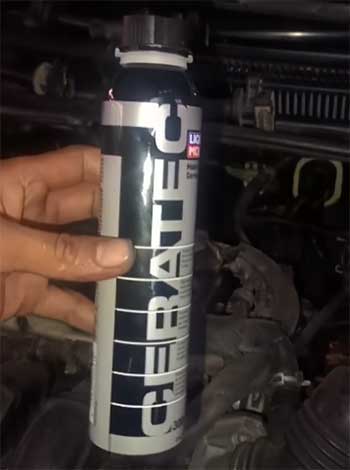
- Pair It with Quality Oil: You wouldn’t put cheap ketchup on a gourmet burger, right? Same deal here. Ceratec’s awesome, but it works best with good motor oil. I stuck with full synthetic in both my cars, and it’s been smooth sailing. The ceramic particles need a solid base to do their job, so don’t skimp on the oil. Check your owner’s manual for the right viscosity, and you’re golden.
- Add It After an Oil Change: Timing matters. I poured Ceratec in right after swapping my oil, and it mixed in perfectly. Doing it mid-cycle might dilute the effect, and you won’t get the full 50,000-kilometer benefit. Fresh oil plus Ceratec is the winning combo—trust me, it’s how I got those smooth results in my Civic and the Mazda.
- Stick to the Dosage: One bottle’s enough for 5 liters of oil, and that’s all you need. I was tempted to add extra, thinking more is better, but resist the urge. Overdoing it could throw off your oil’s balance, and nobody wants that. Follow the instructions—300 milliliters does the trick. My engines are happy, and I didn’t mess with the recipe.
- Monitor Your Engine Over Time: Keep an eye on how your car feels after adding Ceratec. I noticed the biggest changes around 300-500 miles, so give it a few weeks and some drives to settle in. Listen for noise, feel the smoothness, and check your fuel mileage. It’s not a set-it-and-forget-it deal—you’ll want to see the payoff for yourself.
- Avoid Wet Clutches: This one’s straight from Liqui Moly—don’t use Ceratec if your ride has a wet clutch, like some motorcycles. It’s designed for engines, transmissions, and pumps, but that slick ceramic coating could make a clutch slip. I don’t ride, so it’s no issue for me, but if you do, double-check your setup first.
Comparison of LIQUI MOLY Ceratec With Other Brands
Now, let’s put Ceratec up against the competition—it’s only fair, right? I’ve poked around with other additives like Liqui Moly’s own MoS2, Sea Foam, and Lucas Oil Stabilizer, so here’s how they stack up.
- Ceratec Vs. Liqui Moly MoS2
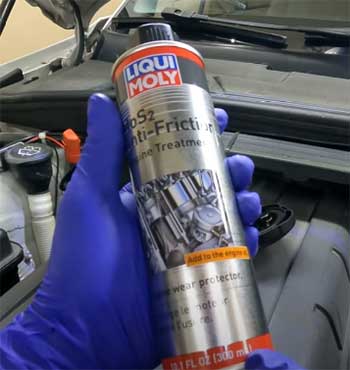
First up, Ceratec against its sibling, MoS2.
I almost went with MoS2 for my Civic—it’s cheaper, usually around $15, and uses molybdenum disulfide to cut wear.
It’s old-school cool, like a trusty wrench.
But here’s the rub: it turns your oil dark quick.
I didn’t want a dealership side-eyeing my dipstick during a warranty check, so Ceratec’s cleaner, orange vibe won me over.
MoS2’s solid for beaters needing grit, but Ceratec’s ceramic tech feels smoother and more refined.
My engines purred with Ceratec in a way MoS2 never managed on my old rides—less grunge, more glide.
- Ceratec Vs. Lucas Oil Stabilizer
Next, Ceratec vs. Lucas Oil Stabilizer. I’ve poured Lucas into a clunker years back, and it’s thick—like molasses thick. At $10-$12, it’s a budget champ for quieting worn engines, almost masking noise with its heft.
But my Civic?
It’d choke on that syrup. Ceratec’s lighter, sleeker—$25-$30 gets you ceramic finesse, not a heavy bandage. Lucas is great if your engine’s on its last legs, but Ceratec’s about prevention, not just patching.
After 500 miles, my car felt alive with Ceratec, not bogged down like Lucas left my old beater. It’s future-proofing vs. duct tape.
- Ceratec Vs. Sea Foam
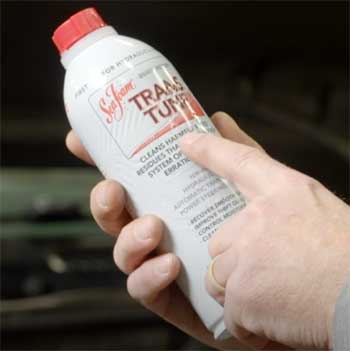
Finally, Ceratec takes on Sea Foam. I’ve sworn by Sea Foam for fuel system cleanups—it’s a $10 gunk-buster I keep in the garage.
But as an oil additive?
It’s out of its depth. Sea Foam’s a short-term cleaner, flushing crud in a few hundred miles, while Ceratec’s a 50,000-kilometer guardian.
I’d use Sea Foam to prep a dirty engine, then add Ceratec for the long haul.
My Mazda’s smoothness came from Ceratec’s ceramic shield, not Sea Foam’s rinse-and-repeat style.
It’s apples and oranges—Sea Foam scrubs, Ceratec protects. Guess which one I’m sticking with?
Ceratec’s the high-tech contender here. MoS2’s gritty and affordable, Lucas is thick and masking, Sea Foam’s a cleaner—not a protector.
Ceratec’s price stings, but that ceramic edge and thermal stamina make it feel like it’s built for my modern engines, not just holding together yesterday’s.
After feeling the difference, I’m Team Ceratec all the way—you get what you pay for, and my rides prove it.
Frequently Asked Questions (FAQ)
From my experience, Ceratec doesn’t hit the ground running—it needs a little time. I started noticing smoother operation around 150-300 miles in both my Civic and my wife’s Mazda. The full effect kicked in closer to 500 miles, especially on noise reduction. Give it a few hundred miles to coat your engine properly—you’ll feel it when it settles.
You don’t need to add it every oil change—once every 50,000 kilometers (about 31,000 miles) is the sweet spot, per Liqui Moly. I plan to toss it in every third or fourth oil change, depending on my mileage. With 6,000-mile intervals, that’s roughly every 18,000-24,000 miles for me. No need to overdo it—just let it work its long-term magic.
Nah, don’t get your hopes up for that. I didn’t feel any power boost in my Civic or the Mazda—it’s not about horsepower; it’s about protection and efficiency. The smoothness might make it feel peppier, but my butt dyno says no extra ponies. If you want speed, tune your car—Ceratec’s here to keep it alive, not make it a racecar.
I was skeptical too—fancy additives can sound like hype. But after using it, I’m a believer. The science makes sense: ceramic particles reducing friction isn’t voodoo; it’s engineering. My engines are quieter, smoother, and I’ve got no regrets. It’s not a cure-all, but it’s far from snake oil—real results back it up for me.
Wrapping Up
Alright, you’ve heard my story—Liqui Moly Ceratec is the real deal, and I’m urging you to grab a bottle. It’s transformed my Civic and my wife’s Mazda into smoother, quieter rides, and I’m betting it’ll do the same for you.
Sure, it’s pricey, and it won’t work miracles overnight, but the long-term protection and potential fuel savings make it a no-brainer. Stop wondering and start pouring—your engine deserves this kind of love.
Get it, try it, and thank me later.
